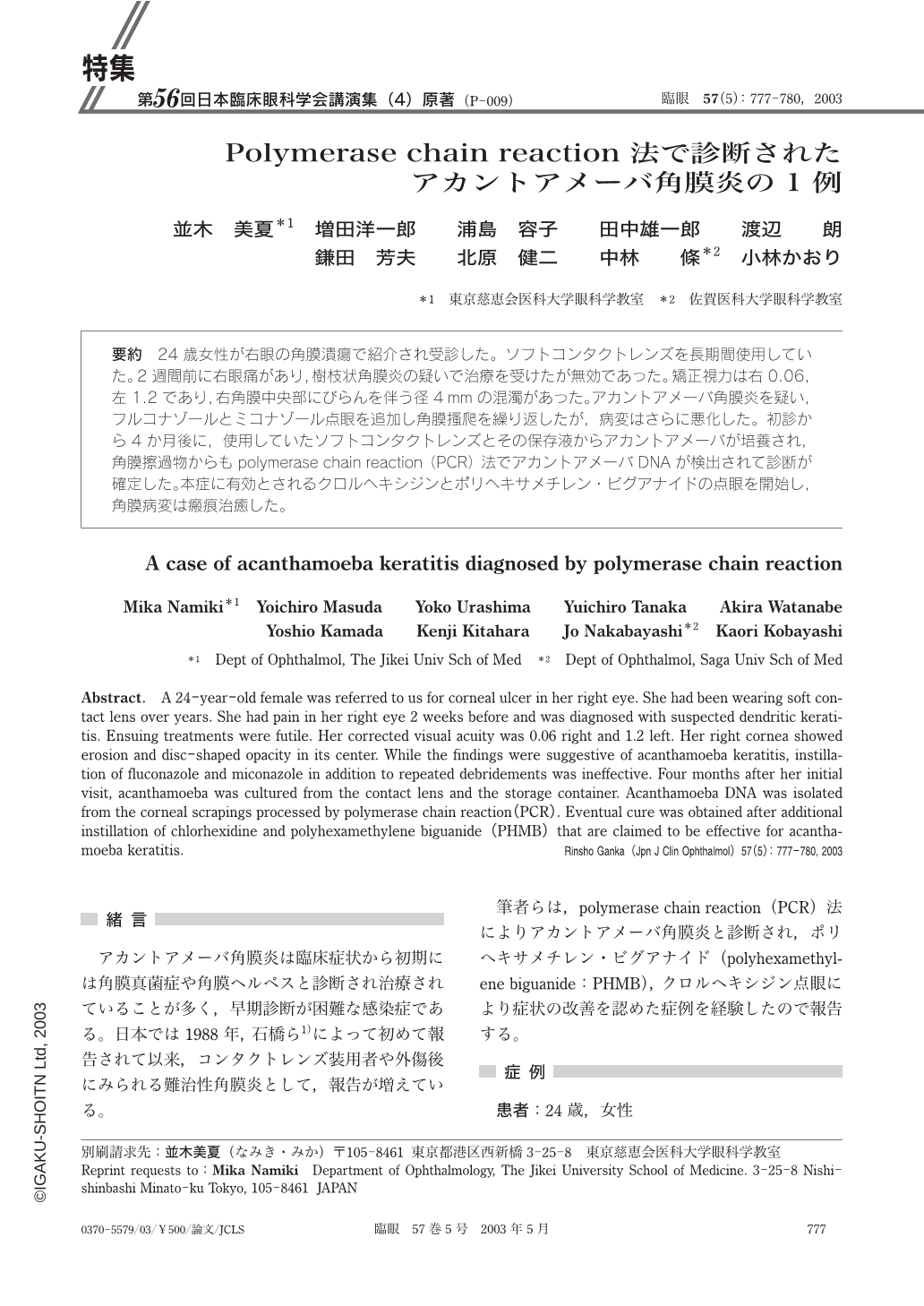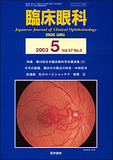Japanese
English
- 有料閲覧
- Abstract 文献概要
- 1ページ目 Look Inside
要約 24歳女性が右眼の角膜潰瘍で紹介され受診した。ソフトコンタクトレンズを長期間使用していた。2週間前に右眼痛があり,樹枝状角膜炎の疑いで治療を受けたが無効であった。矯正視力は右0.06,左1.2であり,右角膜中央部にびらんを伴う径4mmの混濁があった。アカントアメーバ角膜炎を疑い,フルコナゾールとミコナゾール点眼を追加し角膜そう爬を繰り返したが,病変はさらに悪化した。初診から4か月後に,使用していたソフトコンタクトレンズとその保存液からアカントアメーバが培養され,角膜擦過物からもpolymerase chain reaction(PCR)法でアカントアメーバDNAが検出されて診断が確定した。本症に有効とされるクロルヘキシジンとポリヘキサメチレン・ビグアナイドの点眼を開始し,角膜病変は瘢痕治癒した。
Abstract. A 24-year-old female was referred to us for corneal ulcer in her right eye. She had been wearing soft contact lens over years. She had pain in her right eye 2 weeks before and was diagnosed with suspected dendritic keratitis. Ensuing treatments were futile. Her corrected visual acuity was 0.06 right and 1.2 left. Her right cornea showed erosion and disc-shaped opacity in its center. While the findings were suggestive of acanthamoeba keratitis,instillation of fluconazole and miconazole in addition to repeated debridements was ineffective. Four months after her initial visit,acanthamoeba was cultured from the contact lens and the storage container. Acanthamoeba DNA was isolated from the corneal scrapings processed by polymerase chain reaction(PCR). Eventual cure was obtained after additional instillation of chlorhexidine and polyhexamethylene biguanide(PHMB)that are claimed to be effective for acanthamoeba keratitis.

Copyright © 2003, Igaku-Shoin Ltd. All rights reserved.


